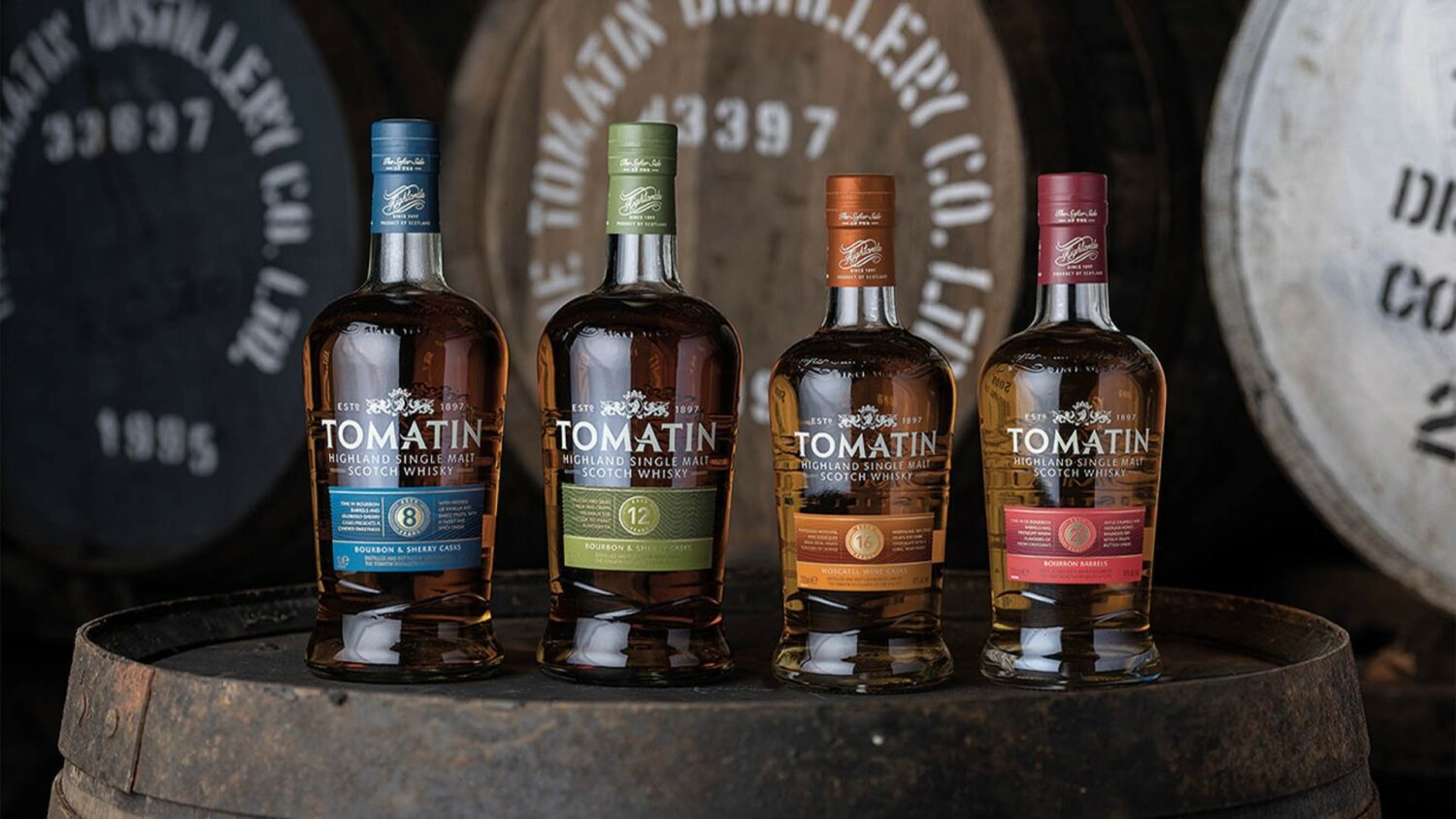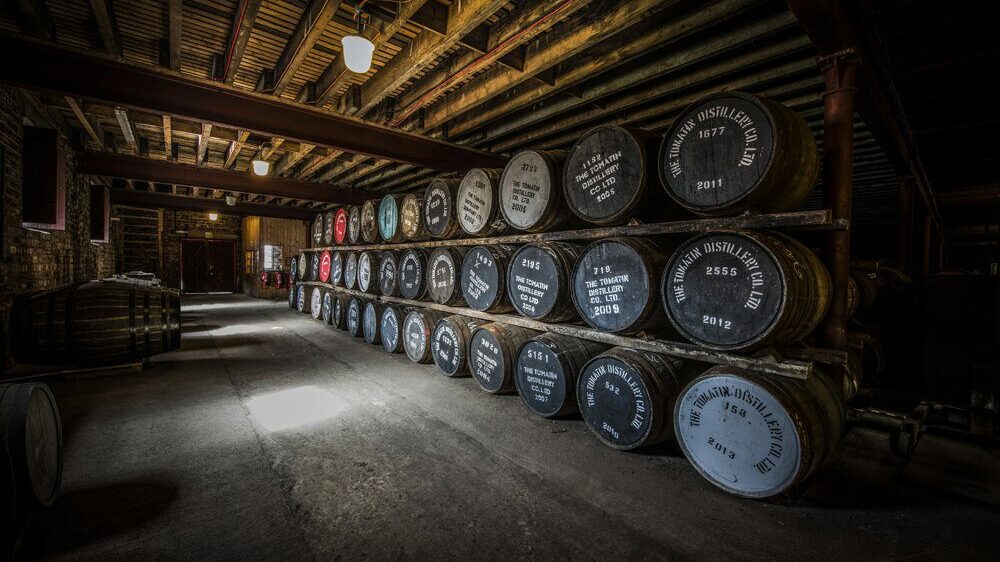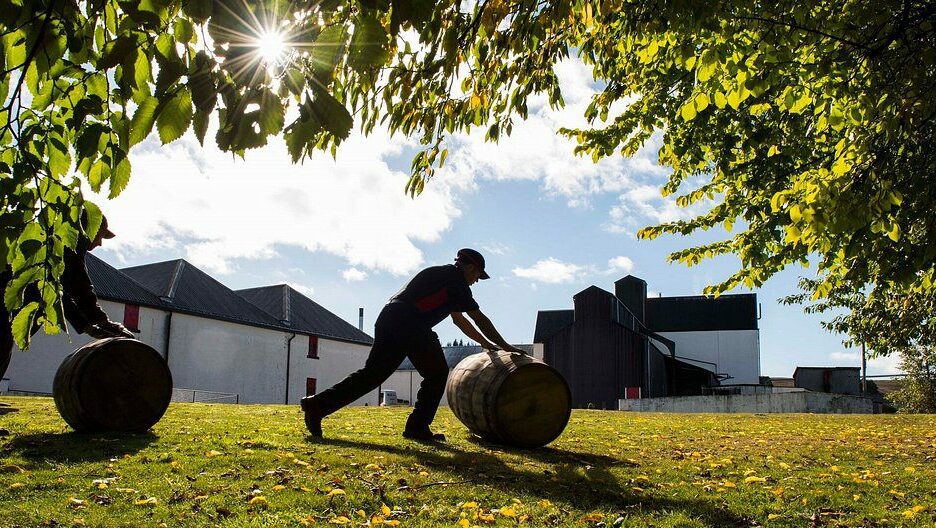
Scott Adamson’s role at Tomatin is a three-way split between champion, historian and blender, he tells Gary Quinn
Scott Adamson is a Munro Bagger, that elusive group of people who hike into Scotland’s wild places to conquer peaks of over 3,000ft (914m). Named after Sir Hugh Munro, who ventured out in the 1890s to record Scotland’s tallest mountains (he put 283 peaks on his list), Munro Baggers aim to hike them all. Right now, Scott is at 50 peaks bagged and is aiming for a busy hiking season ahead.
Luckily for him, his role as global brand ambassador and blender at Tomatin distillery in the Highlands puts him in the heart of Scotland and already 315 metres above sea level. He lives within easy reach of incredible mountain ranges. “I meet people all the time who have travelled hundreds of miles just to walk up a hill in my backyard,” he says with a smile. “I’m very privileged.”

His friends agree. Spending a big chunk of his time travelling around the world to promote the Tomatin whiskey range and the rest spent blending and testing the wares of this nearly 130-year-old whisky maker, he doesn’t get to complain about a bad day at work very often; he says.
KING OF SCOTS
Despite being brought up in the shadow of the Dalmore and Invergordon distilleries in Inverness, some 18 km (11.3 miles) north of Tomatin, he didn’t foresee a whisky role in his future. A graduate of the University of the Highlands and the Islands, he studied Scottish history, with a speciality in the historical portrayal of Robert the Bruce – King of Scots from 1306 to 1329 and leader of the first war of Scottish Independence against England.
The pivot to whisky seems unlikely, but on examination, it makes perfect sense. In 2012, Tomatin was seeking a temporary research intern to document the historical basis of its brand story. “When I arrived, I was met with this puzzle of finding a historical basis for Tomatin’s story. Very often, whisky brands are marketed on tales that began more than a century ago. What we were trying to do is find the proof of Tomatin’s version.”

For Tomatin, that task is helped by the fact that the distillery still retains workers’ houses on-site. A series of cottages and larger homes for staff have survived where many other distilleries have sold them off and this puts historical documents or photographs right in the path of anyone who is looking for them.
“I don’t think it was realised at the time just how valuable it was to have people living on the site. People would find documents in their attics, and they would bring them to me. You get this whole other layer of distillery life, and this can become part of the brand story.”
BOOK NUMBER ONE
A recent find was a ledger called Book Number One that recorded all the casks of whisky made between 1909 and 1929 and who they were made for. “It was in the attic of the visitor centre underneath a pile of leaflets from the 1980s. This huge fat book listed all the whisky made during these years. It was really cool to see not just the typical casks you’d expect but also rum, port and Madeira being used at this early stage.”

He outlines how the distillery was bought and reopened by two families in 1909. They were wine and spirits merchants and received many cask types, which they used for their blending.
“The earliest bottle of Tomatin we have in the archive is from 1926. It’s a nine-year-old single malt, so there’s every chance when we look through that ledger for the year 1917, we can trace the actual cask and whisky that bottle came from. But also, it revealed which farmer supplied the barley, and so we could map this really local part of the story too.”
Recently, a photograph of three of the distillery cottages landed on his desk, and one of them didn’t have a roof. While trying to figure out why that might be, he discovered it was probably taken between 1906 and 1909, when the distillery was closed. The roof would have been removed so they didn’t have to pay tax. It was probably a simple thing at the time, he explains, but one that paints another important detail in the Tomatin story.

BOOM AND BUST
It’s an ambitious tale fuelled by hard work, sudden closures and long periods of success. It opened at the peak of the Victorian whisky boom, one of the thirty-plus distilleries built in the 1890s. It closed in the early 1900s before reopening to become a darling of the whisky blenders.
“The two families that bought it developed a business model that allowed them to become known as making the malt of choice for whiskey blenders. This continued right up to the mid-point of the 20th century, with Tomatin emerging from the post-war period as one of the biggest distilleries in the world.”
It reached a peak in 1974 when it produced 12.5 million litres of alcohol, but even this couldn’t match the volume of orders coming in. According to one of Tomatin’s barley suppliers who was around in the 1970s, Tomatin pretty much dictated the price of malt in the UK at this time as it was buying so much.
“But then the boom was followed by an incredible bust in the 1980s. It was a really sudden change. Tomatin became the first distillery since the second world war to enter voluntary liquidation. It went from being the world’s biggest malt producer to being liquidated, and this, in some ways, triggered the distillery closures of the 1980s.”

NEW OWNERS
Japanese conglomerate Takara Shuzo now owns Tomatin. It bought over the whisky maker in the late 1980s but reportedly takes a hands-off approach, allowing the distillery to drive its own journey, quite independently. A big part of that is brand building. “A lot of people aren’t aware of Tomatin as a brand and they’re also not aware that they’ve been drinking its whisky for 50 to 60 years in blends. It’s this idea that fuels our expansion [into own-brand single malt]. We realised that if blenders like our whisky so much, the consumer will too.”
Tomatin has a range of core releases, limited editions and prestige bottles that you’ll find in retail and as travel exclusives. Maturing and finishing in classic PX and oloroso sherry casks, it also offers a terrific series of releases in Amarone, Barolo and Moscatel casks. Add to this the wide age range of their vintages – going from 12 to 50 years maturation – this is a brand that takes the diversity of flavour seriously.

“I can’t think of anything more dull than having five whiskeys that are all matured in the same way for different periods of time,” Scott says, smiling. “Once you’ve talked about one whiskey, the only difference is this one has been in the cast two years longer.”
“With our whisky, you can expect a really wide range of flavour types and particularly with the older vintages, a huge explosion of flavour.”
CÚ BÓCAN
Cú Bócan is Tomatin’s lightly-peated series and is produced once a year and is now a stand-alone brand. It’s experimental in nature and allows the team to have a little bit more fun and try new flavour partnerships. “It’s less about what it says on the label and more about ‘let’s sample blend combinations blind and see what works well together’,” he explains. “So, for Cú Bócan Creation 1, we blended Moscatel casks, which have this lovely orange marmalade flavour, with imperial stout casks that bring this bitter chocolatey flavour. The two together just worked really, really well, but you might not have expected it.”

That series is now on Creation 5, and the experimentation continues with whisky matured in rare Andean oak, a species native to Columbia and Panama.
After a century of boom and bust, Tomatin is back where it belongs: on the lips of devoted consumers all over the world. Scott Adamson is fascinated with where it has brought him. Jumping on and off planes, blending and championing the brand while helping to write its story is a huge privilege, he explains. “It’s a really great job,” he says “and I and my friends can’t quite figure out why someone is paying me to do it.”
To read more about Tomatin and its releases, visit our Tomatin brand page.
Recent Posts
Recent Posts
Have a content request? Ask us in the comments below!



